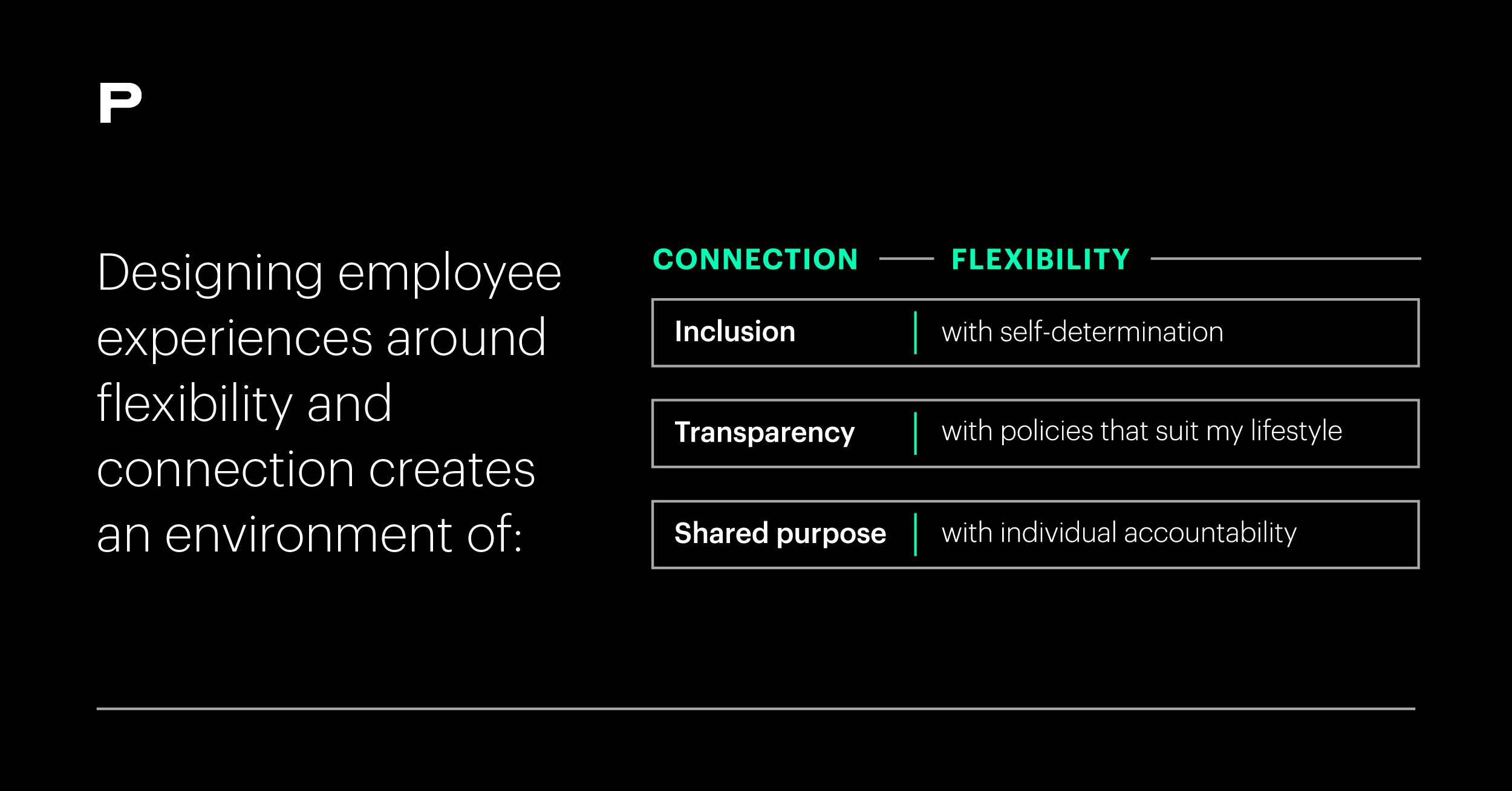BLOG
Tailoring Employee Experience for Asia’s New Workforce
Adopting an employee-centric strategy for the unique workforce in Asia.
Hybrid work was supposed to be the future, but now with economic headwinds and continuing uncertainties, existing employee experience strategies are crumbling, even in Asia. Despite robust economic growth, concerns persist over potential slowdowns in major Asian markets, such as China and Japan, and their cascading effects on regional trade, investment and talent mobility. Companies are walking on a monetary tightrope due to rising interest rates and global inflation. This has prompted companies to reevaluate their talent needs and prioritize adaptability and digital skills. Additionally, stressors like rising living costs and geopolitical instability have caused a high mental health risk for employees in Asia.
The Imperative of Fostering an Employee-Centric Strategy
In Asia’s complex business landscape, adopting an employee-centric strategy is a crucial imperative for organizations seeking uncommon growth.
Staying Competitive in a Tight Labor Market
In the competitive labor market in Asia, the war for talent will rage stronger than ever. The 2023 Hays Asia Salary Guide revealed talent and skill shortages as the foremost challenges confronting employers across Asia, driving a shift towards skills-based talent acquisition as a pivotal strategy for thriving in this fiercely competitive landscape.
Addressing Specific Employee Needs in Asia
Despite experiencing increased productivity during the remote work era, the modern Asian workforce faces a multitude of challenges, including burnout, cultural disconnection, and diminishing job satisfaction. This is evidenced by a PwC report revealing that only 57% of respondents in Asia are satisfied with their current jobs.
Prioritizing flexibility and work-life balance remains crucial, alongside the need for proficiency in regional languages and a deep understanding of cultural and regulatory landscapes. Encompassing nearly 50 countries each with its own distinct cultural and linguistic tapestry, many roles in Asia are inherently regional which means there is a higher demand for businesses to foster agility and cultural intelligence. Employees find themselves at a crossroads, balancing demands from both Asian and Western headquarters. The ability to comprehend and align with the priorities and expectations of each, while advocating for the unique needs of Asian markets, becomes a critical skill. Moreover, fostering positive cross-cultural collaboration is not merely an option but a necessity for organizations to thrive in the intricate Asia business ecosystem.
Creating Employee-Centric Offerings
As business optimism confronts talent challenges in Asia, organizations must prioritize employee-centric strategies, emphasizing cultural awareness, flexibility and work-life balance. By addressing the intricacies of the Asia talent landscape, businesses can attract, retain, and engage with the right talent, ultimately driving long-term and sustainable business growth.
The New Equation: Flexibility + Connection = Wellbeing
Prophet’s research highlights flexibility and connection as the main levers for achieving holistic employee well-being. This means adapting to diverse needs and fostering meaningful connections aligned with the company’s mission. The dynamic synergy forms a reciprocal relationship: as businesses prioritize well-being, individuals become dedicated stewards, fostering a harmonious cycle of mutual care and organizational success.

1. Highlighting Flexibility Through Cultural Transformation
Mercer’s Global Talent Trends (GTT) Study 2023 reveals that only half of Asia-based employers currently offer flexible work options for all employees, trailing behind the global average of 56%. In fact, a substantial 68% of APAC workers expect their companies to offer hybrid work arrangements in the next year. Hence it is crucial for companies in Asia to create a sense of openness and flexibility in the workforce environment that caters to employees’ emotional needs and changing expectations.
Cultural transformation programs are an effective avenue to cultivate meaningful experiences and internal trust among employees. A key step to bridge the gap between employee expectations and company commitments is by defining a clear and compelling Employee Value Proposition (EVP).
For example, Singapore’s UOB (United Overseas Bank) has crafted an EVP centered around care, growth, and trust, actively prioritizing employee well-being. The leadership at UOB aims to strike a harmonious balance between purpose and equilibrium, ensuring employee motivation while allowing ample time for personal pursuits. Notably, their implementation of a two-day remote work arrangement in 2022 resulted in increased employee morale and loyalty without any adverse effects on productivity.
Coming out of the pandemic, an Asian luxury travel retailer saw the need to revamp their EVP in 2023. This initiative aimed to boost employee engagement, reignite culture and establish a more powerful employer brand to attract and retain top talent. To achieve these goals, they focused on creating a unified message that clearly defined the company’s values and emphasized the opportunities for growth, learning and exploration that aligned with both the employees’ purpose and the overall brand strategy.
With a well-defined EVP, businesses can then implement effective internal communication and culture programs to create meaningful and engaging experiences. Many companies in Asia are actively undertaking culture transformation initiatives to enhance employee experience.
2. Deepening Connection Through Collaboration
In hybrid and digital workplaces, employees are increasingly seeking meaningful connections, not just with their peers, but also with the leadership. In addition to creating interesting and engaging employee experiences, businesses must also recognize the pivotal role of collaboration in enhancing connections. Deepened collaboration not only enables employees to forge stronger bonds, fostering a sense of unity and shared purpose but also cultivates a profound connection to the core values and mission of their company. This, in turn, leads to a collective commitment to overarching goals, enhancing workplace camaraderie.
Prophet’s research, The Collaborative Advantage, not only sheds light on Southeast Asian companies’ heightened appreciation for collaboration but also reveals a noticeable lag in execution compared to their counterparts in other regions. The report introduces the Collaboration Flywheel, a comprehensive framework guiding leaders in prioritizing and expediting efforts to strengthen collaborative capabilities. Key tenets of this framework include:
- Coordination: Illustrate the linkage between an employee’s individual effort and the organization’s purpose. Guide individuals by showcasing “what good looks like” and granting decision-making authority to lower levels, leveraging digital transformation as an enabler.
- Cooperation: Align incentives across the organization, balancing differing definitions of what a “good” incentive is. Consider cultural differences when creating incentives and foster a shared mindset that collectively achieves unified goals.
- Collaboration: Focus on the process, not just outcomes, to make room for more agile thinking, allowing synergies and interdependencies to form. Empower employees through a bottom-up, test-and-learn approach, encouraging them to challenge the status quo and implement new, fresh ways of thinking.
Singapore’s Government Technology Agency (GovTech) provides an excellent case study. GovTech embraces a flat organizational structure that grants partial autonomy to its sub-divisions. This structure enhances agility in market response and allows robust collaboration among its divisions. When recruiting new talent, GovTech prioritizes individuals with strong learning agility, ensuring that its workforce remains adaptable and forward-thinking. This internal culture of collaboration enables it to remain competitive among other tech players. As a result, in 2022, 99% of citizens surveyed expressed satisfaction with Singapore’s government digital services. Moreover, GovTech ranked third place in Singapore’s Best Workplaces in Technology List in 2023.
Additionally, representation and diversity are becoming a pivotal piece in strengthening connections within an organization. According to the EY Asia-Pacific Belonging Barometer 2022, employees’ sense of belonging is enhanced from 22% to 70% when they perceive diversity and strong leadership in Diversity, Equity, and Inclusion (DEI) initiatives. In the dynamic Asian talent market, where individuals are increasingly prioritizing DEI considerations, companies risk losing valuable employees if they fail to invest in creating an inclusive workplace. It is essential for organizations to articulate DEI mission statements and define how these principles align with their core values.
For example, Microsoft Asia Pacific has demonstrated a commitment to DEI through initiatives like the “Code; Without Barriers” program which certifies women in AI across the region, pushing the company further to continue their mission of empowering Asia Pacific’s digital ambition. Similarly, Ørsted Taiwan exemplifies an award-winning approach to DEI by embedding it in their business strategy, with a goal to achieve a gender ratio of 6:4 by 2030. Right now, over half of the Asia Pacific senior management team comprises females. Moreover, Ørsted Taiwan fosters strong connections through initiatives like utilizing the “Insights Discovery” psychometric tool and implementing “GenderIN” sessions to encourage discussions and guide policymaking, contributing to a high level of employee satisfaction.
FINAL THOUGHTS
As companies confront unique workforce challenges in Asia, tailoring employee experiences is of paramount importance. By honing in on the simple equation: Flexibility + Connection = Wellbeing, organizations can shape their vision and build a roadmap for gradual implementation. Prophet can help define a distinctive strategy and frame flexibility policies to make them relevant to your organization.

